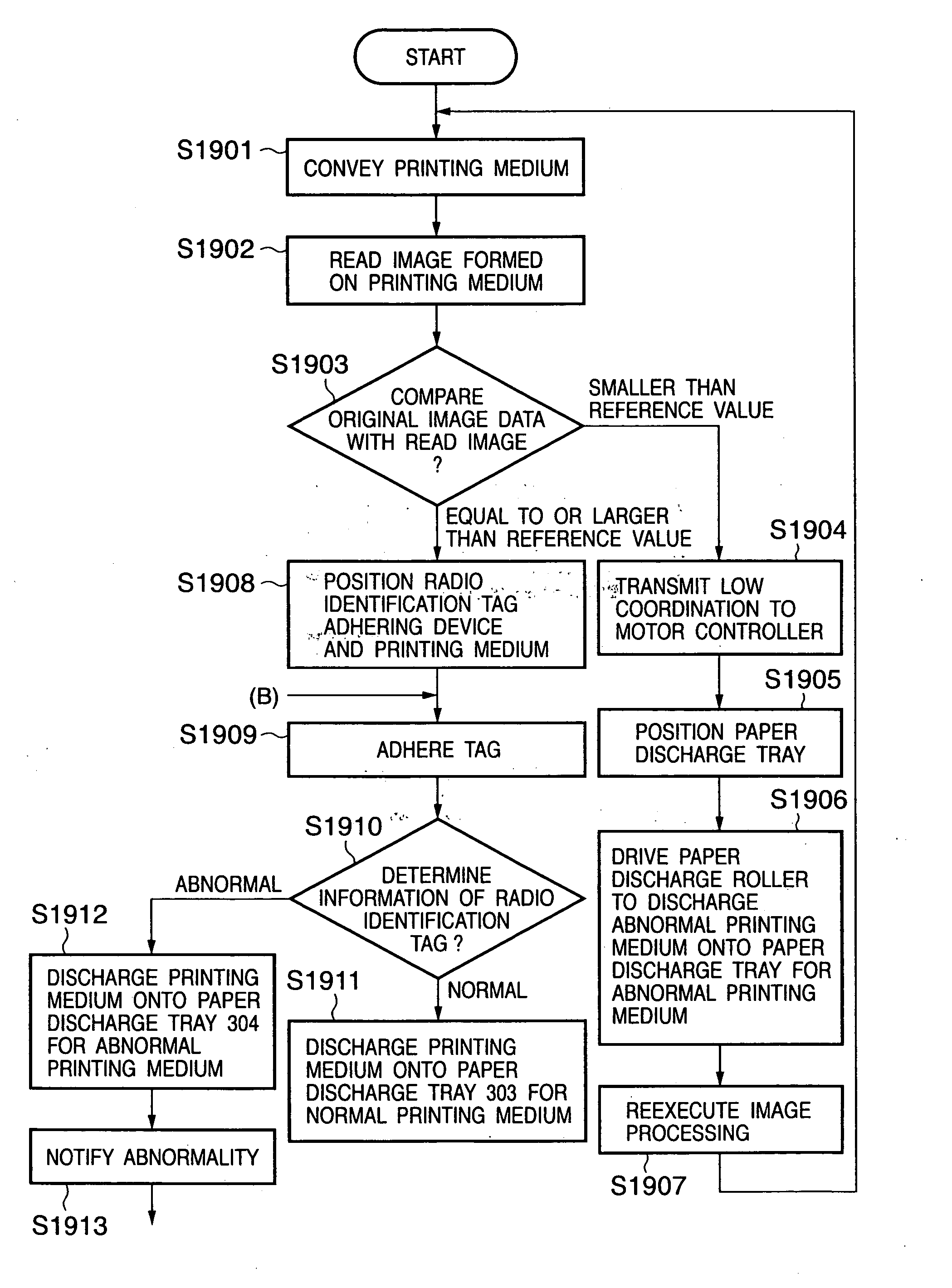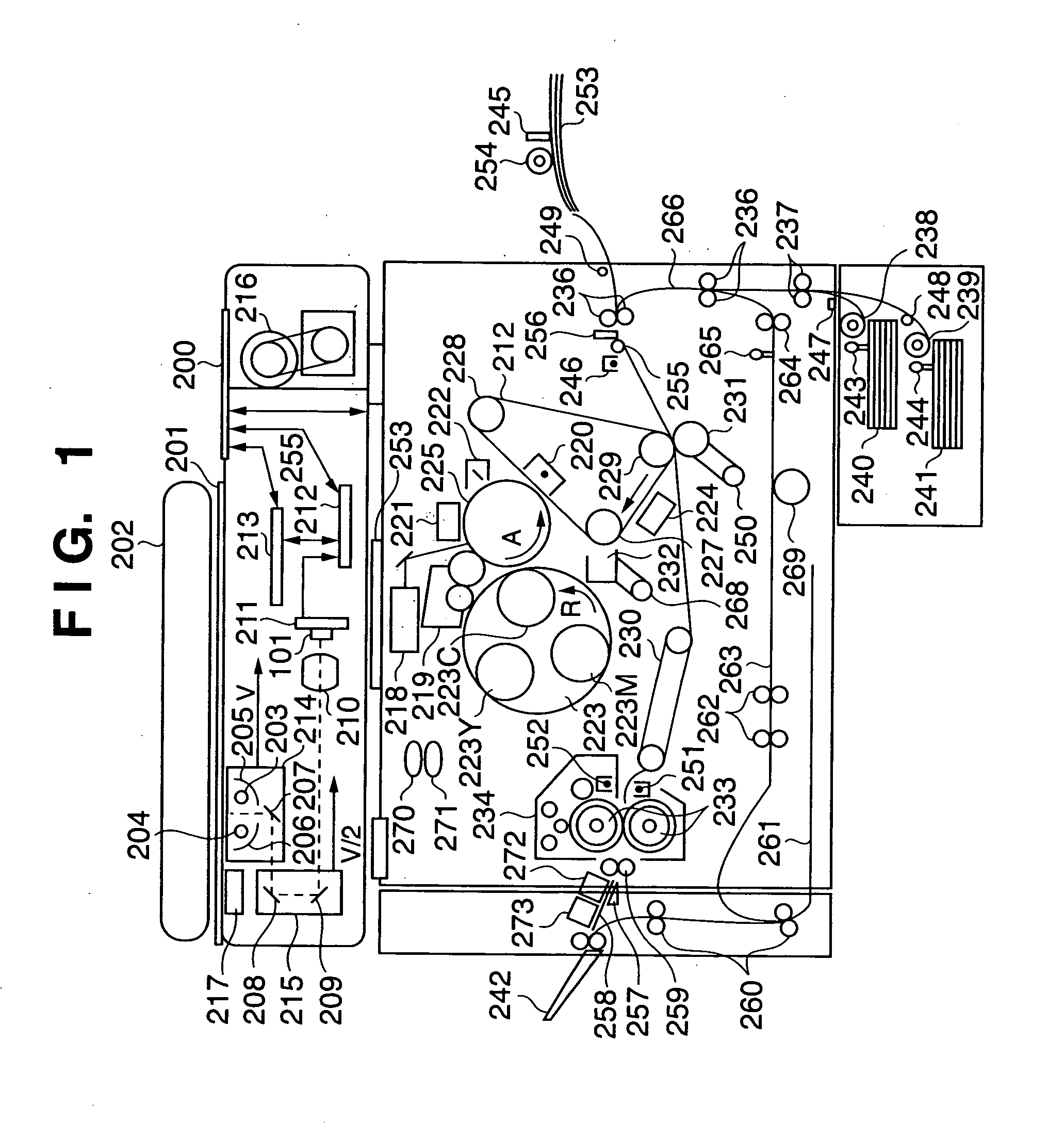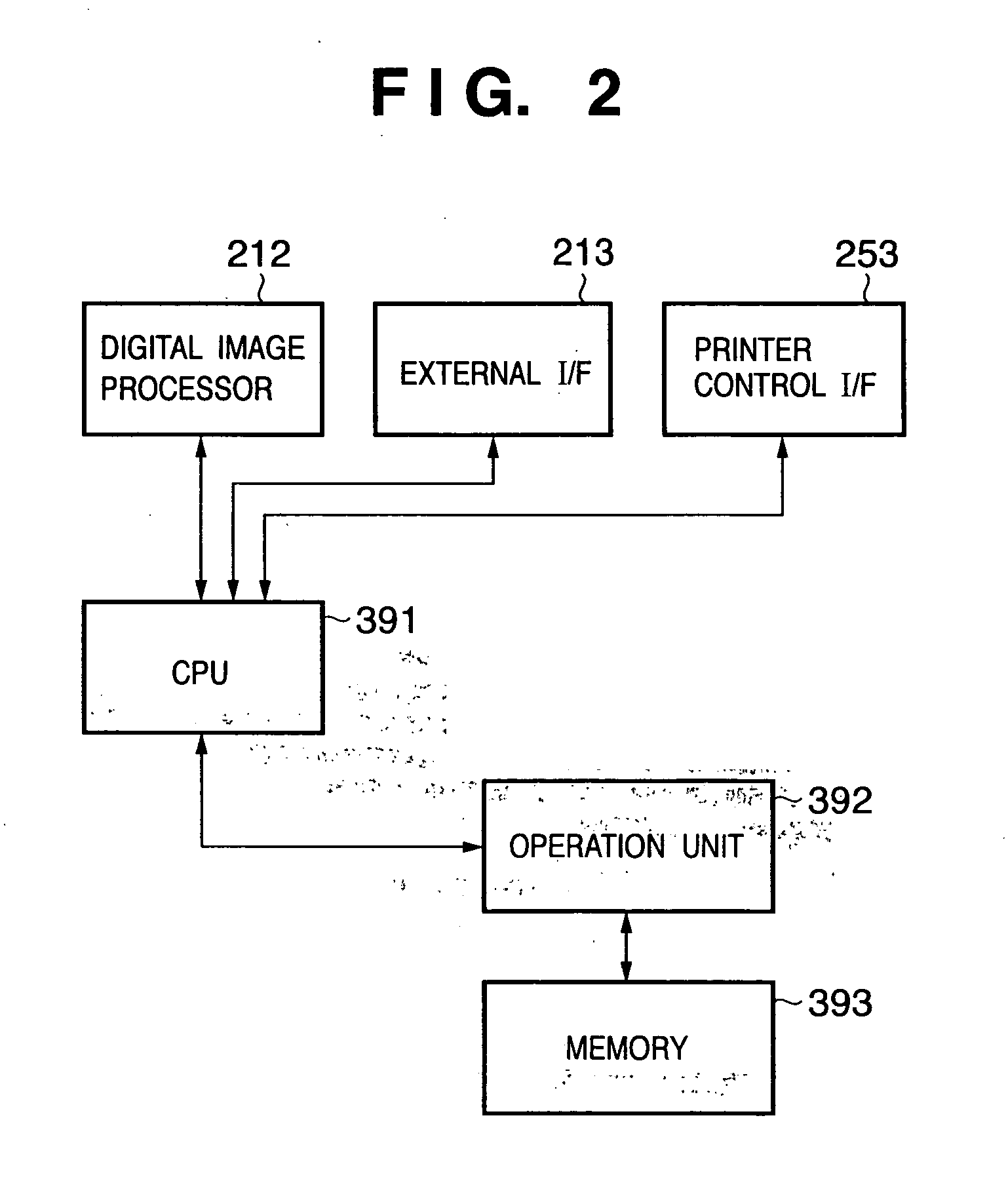Image forming apparatus and method of controlling image forming apparatus
a technology of image forming apparatus and image information, which is applied in the direction of electrographic process, instruments, transportation and packaging, etc., can solve the problems of not being able to collectively manage pieces of information by a digital information database, no attached information as described above can be related to image information any longer, and it is difficult to browse or reuse information concerning printed image information
- Summary
- Abstract
- Description
- Claims
- Application Information
AI Technical Summary
Benefits of technology
Problems solved by technology
Method used
Image
Examples
first embodiment
[0054] (First Embodiment)
[0055] FIGS. 1 to 3 are views for explaining the arrangement of an image forming apparatus to which an image formation technique provided by the present invention is applied. The basic configurations will be explained below with reference to FIGS. 1 to 3.
[0056]
[0057] First, the arrangement of a color reader will be described below. FIG. 1 is a view showing the overall arrangement of the image forming apparatus. In FIG. 1, reference numeral 101 denotes a CCD which is an image sensing element; 211, a substrate on which the CCD 101 is mounted; 200, a controller which controls the whole image forming apparatus; 212, a digital image processor; 201, an original glass plate (platen); and 202, a document feeder (DF) (a mirror-surface press plate may also be used instead of the document feeder 202).
[0058] Reference numerals 203 and 204 denote light sources (halogen lamps or fluorescent lamps) for illuminating an original; 205 and 206, reflectors for condensing ligh...
second embodiment
[0130] (Second Embodiment)
[0131]FIG. 16A is a view for explaining the arrangement of an image forming apparatus according to the second embodiment to which an image formation technique provided by the present invention is applied. The differences from the arrangement of the first embodiment shown in FIG. 1 are that the radio identification tag adhering device 272, radio identification tag information writing device 273, and paper discharge tray 242 are removed, and parts denoted by reference numerals 300 to 330 are added.
[0132]
[0133] The newly added parts will be described below. Reference numerals 300 to 304 denote members forming a paper discharge tray unit of the image forming apparatus. A pole support base 300 fixes a support pole 301 standing upright on the floor surface. The support pole 301 thus fixed by the pole support base 300 has a hollow structure as indicated by the broken lines in FIG. 16A. This allows a movable pole 302 to vertically move in the support pole 301. For...
third embodiment
[0179] (Third Embodiment)
[0180] The contents of the third embodiment will be described below with reference to FIGS. 21 and 22. The arrangement shown in FIG. 21 differs from FIG. 16A of the second embodiment in that a unit 350 (to be referred to as a “radio identification tag information receiving unit” hereinafter) corresponding to a radio identification tag information receiver 217 of a color reader) is added. The other components are denoted by the same reference numerals as in the second embodiment, and a repetitive explanation thereof will be omitted.
[0181]FIG. 22 is a flowchart showing the flow of processing according to the third embodiment. The contents of this embodiment will be described below with reference to FIGS. 21 and 22.
[0182] In step S2201, conveyance of a printing medium is started. Printing media stored in cassettes (240 and 241) and a manual paper feed unit 253 are conveyed one by one onto a paper feed path by pickup rollers (238, 239, and 254). The radio iden...
PUM
| Property | Measurement | Unit |
|---|---|---|
| adhesion | aaaaa | aaaaa |
| temperature | aaaaa | aaaaa |
| dielectric breakdown | aaaaa | aaaaa |
Abstract
Description
Claims
Application Information
 Login to View More
Login to View More - R&D
- Intellectual Property
- Life Sciences
- Materials
- Tech Scout
- Unparalleled Data Quality
- Higher Quality Content
- 60% Fewer Hallucinations
Browse by: Latest US Patents, China's latest patents, Technical Efficacy Thesaurus, Application Domain, Technology Topic, Popular Technical Reports.
© 2025 PatSnap. All rights reserved.Legal|Privacy policy|Modern Slavery Act Transparency Statement|Sitemap|About US| Contact US: help@patsnap.com



